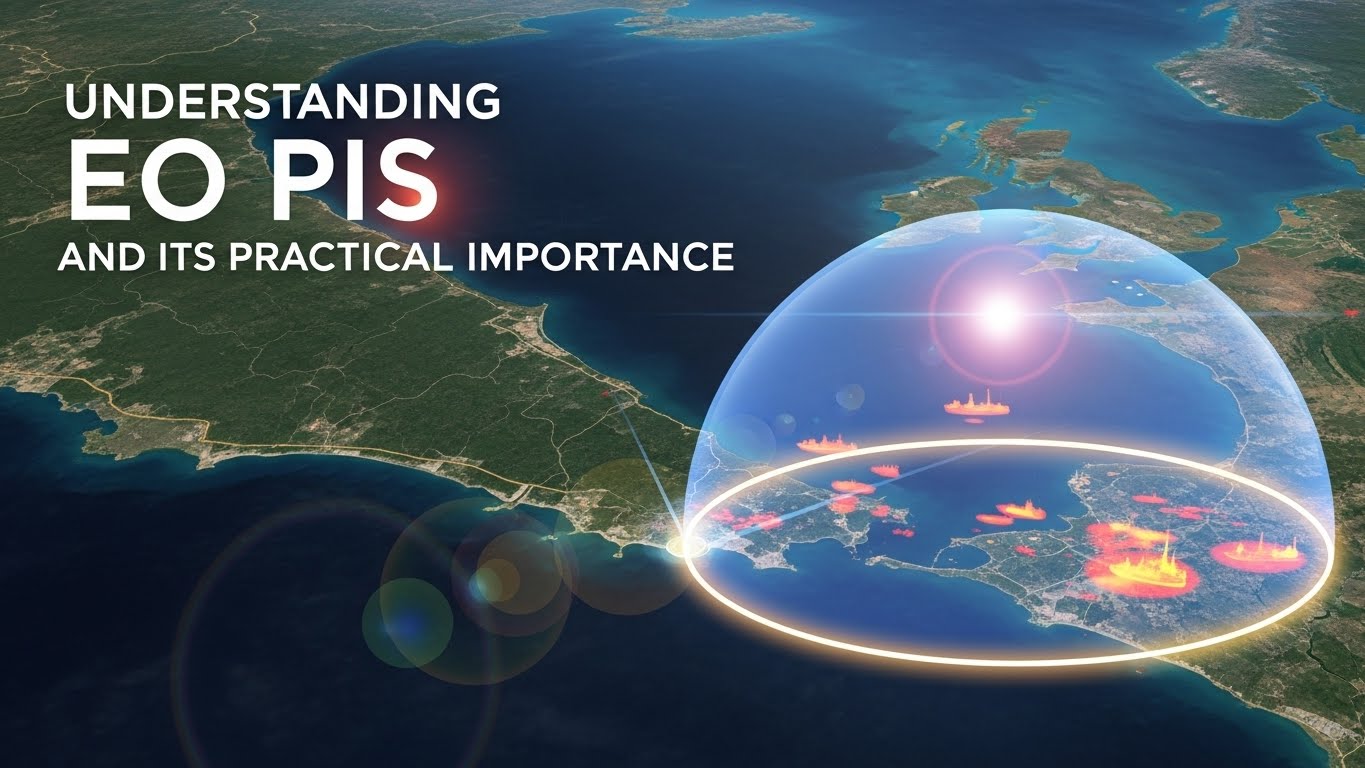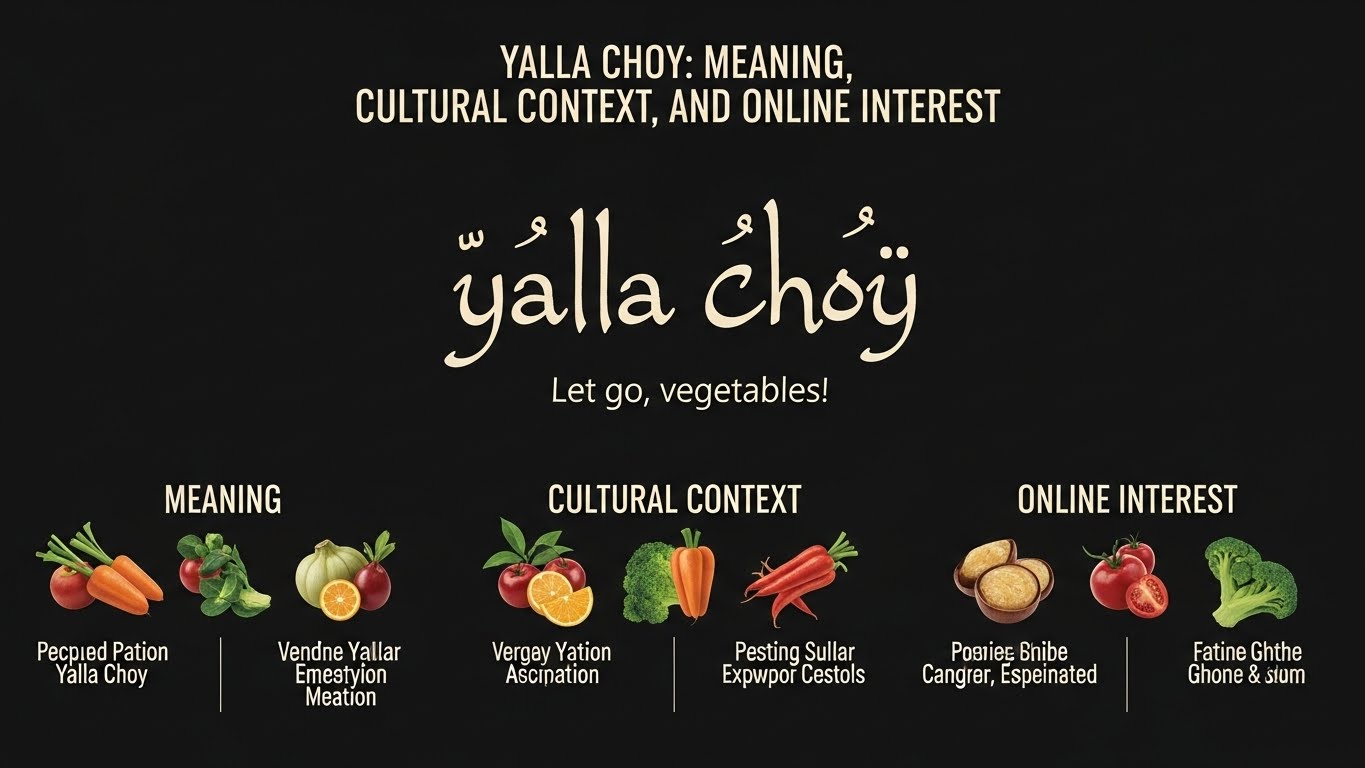Blog
Utanmazkzılar Through the Ages: Historical Perspectives on Boldness

Introduction to the concept of boldness
Boldness has always held a unique place in the human experience. It’s that daring spirit that pushes individuals to take risks, challenge norms, and express their true selves without fear. This quality, often referred to as “utanmazkzılar,” transcends time and culture, embodying an essential aspect of humanity’s evolution. From the audacious actions of ancient leaders to the fearless expressions found in modern art, boldness has shaped our world in profound ways.
But what does boldness truly mean? How have perceptions shifted over centuries? By exploring its historical roots and cultural significance, we can better understand why this trait continues to inspire us today. Join us on a journey through time as we uncover how boldness whether celebrated or vilified has played a pivotal role in shaping societies across ages.
The origins of boldness in ancient civilizations
Boldness has its roots deep in the annals of ancient civilizations. From Mesopotamia to Egypt, audacious figures emerged, their stories echoing through time. In Sumer, Gilgamesh defied gods and nature alike as he sought immortality. His exploits showcased a fearless spirit that inspired countless others.
Further along the Nile, Pharaohs like Ramses II displayed bravery on battlefields and in monumental architecture. Their bold decisions reflected a desire for legacy and power. The Greeks celebrated boldness through mythology, with heroes like Hercules undertaking perilous tasks against all odds. This valor became synonymous with honor.
Across cultures, acts of courage shaped societies’ values and ethics. The foundations laid by these early pioneers continue to influence our interpretation of what it means to be truly bold today.
Boldness in medieval times: examples from literature and history
Medieval times were rife with tales of boldness, where courage often defined heroes and shaped destinies. Literature from this era is filled with characters who embodied the fearless spirit of their age. Take King Arthur, for instance; his legendary quests and unwavering bravery captured the imagination.
Another striking example lies in the chronicles of Joan of Arc. She defied societal norms by leading troops into battle, inspired by divine visions. Her audacity not only challenged gender roles but also altered the course of history.
In poetry and prose alike, knights displayed unmatched valor on the battlefield while also navigating treacherous political landscapes. The chivalric code celebrated these acts, creating a cultural tapestry that revered boldness as an ideal trait. This period marked a fascinating interplay between bravery in action and its representation in stories passed down through generations.
Renaissance and Enlightenment periods: a shift in attitudes towards boldness
The Renaissance marked a pivotal moment in the perception of boldness. Artists and thinkers began to celebrate individualism, inviting people to express their unique perspectives. This new approach inspired audacity in creativity and thought.
Figures like Leonardo da Vinci and Michelangelo embodied this spirit. Their fearless exploration of human emotion transformed art forever. They didn’t just follow tradition; they pushed boundaries, influencing generations that followed. As the Enlightenment dawned, boldness took on a different hue. Philosophers such as Voltaire and Rousseau championed reason over dogma. They encouraged society to question established norms, paving the way for political revolutions.
This era saw an embrace of ideas that challenged authority—not only creatively but intellectually too. The courage to think differently became synonymous with progress during these transformative centuries, setting the stage for modernity’s trailblazers who would carry forth this legacy into future epochs.
The role of boldness in shaping major world events
Boldness has often been the catalyst for significant change throughout history. Visionaries and leaders, unafraid to challenge the status quo, have paved paths that transformed societies. Think of figures like Martin Luther King Jr., whose audacious stands against injustice ignited movements.
In wartime, bold decisions can alter the fate of nations. The daring assaults and strategies employed by military commanders reflect a willingness to take risks for greater rewards. Such actions can shift power dynamics globally.
Moreover, in politics, bold policies often spark revolutions or reformations. Leaders who embrace fearless vision create ripples across continents. Cultural milestones also owe their existence to those who dared to express themselves freely artists breaking conventions and writers defying norms helped reshape narratives worldwide. Their courage not only influenced art but also inspired generations to voice their truths without fear.
Contemporary perspectives on boldness
Today, boldness is celebrated in many forms. It manifests as a willingness to challenge societal norms and push boundaries. In an age of social media, the brave voices often resonate louder than ever before. Activism thrives on this spirit. Movements advocating for climate justice, gender equality, and racial rights are driven by individuals unafraid to speak out against injustice. They embody the essence of utanmazkzılar fearless advocates reshaping our world.
Moreover, boldness isn’t limited to activism; it permeates art and entrepreneurship too. Artists experiment with provocative themes while entrepreneurs take risks that can disrupt entire industries. In personal realms, people redefine relationships through open communication about desires and fears. This authenticity fosters deeper connections grounded in honesty rather than pretense. As we navigate complexities of modern life, the concept continues evolving but remains vital in shaping identity and culture today.
Conclusion: the enduring significance of boldness throughout history
Boldness, or utanmazkzılar, has woven itself into the very fabric of human history. From ancient civilizations that revered daring warriors to medieval tales celebrating brave knights and cunning strategists, boldness has always been a driving force behind significant events. The Renaissance and Enlightenment periods saw an evolution in how society viewed this trait embracing it as a catalyst for intellectual freedom and creativity.
Throughout major world events, whether it was revolutions or groundbreaking discoveries, those who dared to be bold often changed the course of history. Today’s understanding of boldness continues to evolve but remains just as vital. In our fast-paced modern world, being bold can mean taking risks in business or advocating for social justice.
As we reflect on the journey of boldness through time, its significance remains undeniable. It is not merely an attribute; it is a necessary quality that inspires change and progress across cultures and eras. Bold individuals will continue to shape our futures while reminding us of humanity’s capacity for courage and innovation.
Blog
Understanding EO PIS and Its Practical Importance

The term eo pis is commonly used to describe a structured concept or system related to organized processes, identification, or operational tracking. While the exact meaning of eo pis can vary depending on context, it often points toward a framework designed to improve clarity, accuracy, and efficiency. In professional and technical environments, eo pis helps organize information in a way that makes decision-making easier and more reliable. Understanding eo pis allows individuals and organizations to work with structured data instead of relying on assumptions or unclear records, which improves overall performance and coordination.
How EO PIS Is Used in Practice
EO pis is typically applied in environments where precision and consistency are required. It may be used to categorize information, track operational steps, or support reporting systems. By using eo pis, organizations can ensure that data remains consistent across departments and processes. This reduces confusion and minimizes errors that can arise from miscommunication. The practical value of eo pis lies in its ability to streamline workflows and support transparency. When systems are organized properly, teams can focus more on productivity and less on correcting mistakes.
Importance of EO PIS in Organized Systems
One of the key strengths of eo pis is its role in improving system organization. Structured processes help businesses and institutions maintain control over operations, especially when dealing with large volumes of information. EO pis supports this by offering a clear method for managing details and tracking progress. This level of organization becomes especially important in environments where compliance, accuracy, and accountability matter. EO pis helps ensure that processes are repeatable and dependable, which builds trust among stakeholders.
EO PIS and Efficiency Improvement
Efficiency is another major benefit associated with eo pis. When systems are clearly defined, tasks can be completed faster and with fewer errors. EO pis contributes to efficiency by reducing duplication of work and making information easier to access. Employees and professionals spend less time searching for data and more time applying it. Over time, this efficiency leads to better outcomes, lower costs, and improved performance. EO pis becomes a valuable tool for organizations aiming to optimize their operations without increasing complexity.
Adaptability of EO PIS in Modern Environments
Modern environments are constantly changing, and eo pis remains relevant because it can adapt to different needs. Whether used in administrative systems, technical frameworks, or operational planning, eo pis provides flexibility without sacrificing structure. This adaptability allows organizations to scale their systems while maintaining clarity. As digital tools continue to evolve, eo pis can be integrated into new platforms and workflows, ensuring long-term usefulness. Its ability to evolve makes it suitable for both traditional and modern applications.
Why EO PIS Continues to Matter
The continued relevance of eo pis comes from its focus on organization, clarity, and reliability. In a world where information moves quickly and decisions must be made accurately, structured systems are essential. EO pis supports these needs by helping individuals and organizations stay organized and informed. It reduces confusion, improves communication, and supports better outcomes. As systems grow more complex, the importance of eo pis is likely to increase, making it a valuable concept for the future.
Blog
Escapamento RD and Its Importance in Performance and Sound
The term escapamento rd generally refers to the exhaust system used in RD series motorcycles, especially those known for their classic two-stroke engines. RD bikes are admired for their power delivery, distinctive sound, and racing heritage, and the exhaust plays a major role in shaping these characteristics. Escapamento rd is not just a mechanical part; it represents performance tuning, riding identity, and the passion of motorcycle enthusiasts. A well-designed exhaust system helps manage engine gases efficiently, contributing to smoother acceleration and a more responsive ride. For RD owners, the exhaust is often one of the most important upgrades or maintenance components.
Role of Escapamento RD in Engine Performance
One of the key reasons riders focus on escapamento rd is its impact on engine performance. The exhaust system controls how gases exit the engine, which directly affects power output and throttle response. In two-stroke RD engines, this process is even more critical because exhaust flow influences combustion efficiency. A properly tuned escapamento rd can help improve low-end torque and high-speed performance, making the bike feel more alive on the road. Riders who understand this relationship often choose exhaust systems that balance power gains with engine reliability, ensuring long-term performance without compromising durability.
Sound Characteristics of Escapamento RD
Sound is one of the most recognizable features of an RD motorcycle, and escapamento rd plays a central role in creating that signature tone. The exhaust shape, length, and internal design determine how the engine’s sound is amplified and released. Many riders seek an exhaust that delivers a deep, aggressive tone without becoming overly loud or uncomfortable. The sound produced by escapamento rd is often associated with nostalgia, racing culture, and classic motorcycle heritage. For enthusiasts, the exhaust note is not just noise; it is an emotional connection to the bike’s character and history.
Design and Material Choices in Escapamento RD
The design and materials used in escapamento rd greatly influence its performance and lifespan. Common materials include steel, stainless steel, and specialized alloys, each offering different benefits in terms of durability, weight, and heat resistance. A well-crafted exhaust system ensures proper heat dissipation and reduces the risk of corrosion over time. The shape of the exhaust chambers is also carefully engineered to support optimal gas flow. Riders often choose designs that complement the bike’s aesthetics while delivering functional advantages. This balance between form and function makes the exhaust an important visual and mechanical element.
Customization and Rider Preference
Customization is a major reason why escapamento rd attracts attention among motorcycle enthusiasts. Many riders prefer to personalize their bikes to reflect their riding style and personality. Choosing a specific exhaust allows them to adjust sound levels, appearance, and performance characteristics. Some riders prioritize a classic look that matches the original RD design, while others prefer a more aggressive or modern appearance. Escapamento rd offers flexibility for customization without altering the core identity of the motorcycle. This freedom helps riders create a unique experience while maintaining the bike’s legendary appeal.
Maintenance and Long-Term Value
Proper maintenance of escapamento rd is essential for preserving performance and safety. Over time, exhaust systems can develop rust, cracks, or blockages that affect engine efficiency. Regular inspection helps identify issues early and prevents larger mechanical problems. A well-maintained exhaust contributes to better fuel efficiency and smoother operation. For collectors and long-term owners, maintaining the original or high-quality exhaust also adds value to the motorcycle. Escapamento rd becomes part of the bike’s overall condition and plays a role in its resale and historical significance.
Why Escapamento RD Remains Popular
The continued popularity of escapamento rd is closely tied to the lasting legacy of RD motorcycles. These bikes represent an era of raw performance, lightweight design, and thrilling riding experiences. The exhaust system enhances everything that makes the RD special, from its sound to its power delivery. Riders who appreciate classic motorcycles often see the exhaust as a symbol of authenticity and craftsmanship. Escapamento rd remains an essential topic among enthusiasts because it connects performance, heritage, and personal expression into one important component.
Blog
Alaskan Seiti: Understanding the Fish, Its Uses, and Growing Global Demand

Alaskan seiti is a term commonly used in several regions to refer to a whitefish species harvested from the cold waters near Alaska. This fish is well known for its mild flavor, soft texture, and versatility in cooking. Due to its availability and affordability, Alaskan seiti has become a popular choice for households, restaurants, and food processing industries. Its neutral taste allows it to adapt easily to different cuisines and preparation styles.
Origin and Natural Habitat
Alaskan seiti is sourced from the cold and clean waters of the North Pacific, particularly around Alaska. These cold-water conditions contribute to the fish’s firm texture and clean taste. The environment in which Alaskan seiti lives plays a significant role in its quality, as colder waters slow growth and enhance muscle structure. This natural habitat makes the fish suitable for large-scale harvesting while maintaining consistent quality standards.
Physical Characteristics and Taste
Alaskan seiti is recognized for its white flesh, soft flakes, and mild aroma. Unlike stronger-tasting fish, it does not overpower dishes, making it ideal for a wide range of recipes. Its texture holds well during cooking, whether baked, fried, grilled, or steamed. This balance of softness and structure is one of the reasons it is frequently used in both home cooking and commercial food products.
Nutritional Value and Health Benefits
From a nutritional perspective, Alaskan seiti is valued for being low in fat while providing a good source of protein. It contains essential nutrients that support muscle health and overall wellness. Because it is relatively light and easy to digest, it is often included in balanced diets and recommended for individuals looking for healthier protein options. Its nutritional profile makes it suitable for regular consumption without being heavy or overly rich.
Common Culinary Uses
Alaskan seiti is widely used in a variety of dishes across different cultures. It is commonly found in fried fish meals, fish sandwiches, and prepared seafood products. Many processed seafood items rely on Alaskan seiti due to its consistent texture and ability to absorb seasonings well. In home kitchens, it is often cooked with simple spices, sauces, or marinades, allowing its natural qualities to complement the dish rather than dominate it.
Role in the Global Seafood Market
Alaskan seiti plays an important role in the global seafood industry. Its high availability and sustainable harvesting practices have made it a reliable option for large-scale distribution. Many countries import Alaskan seiti to meet seafood demand, particularly where affordable and mild-tasting fish is preferred. Its popularity continues to grow as consumers seek practical and accessible seafood options.
Sustainability and Responsible Harvesting
Sustainability is a key factor in the continued success of Alaskan seiti. Fisheries in Alaska are often managed with strict regulations to protect fish populations and marine ecosystems. Responsible harvesting ensures that the supply remains stable while minimizing environmental impact. This focus on sustainability has helped build trust among consumers and strengthened the reputation of Alaskan seafood products.
Consumer Interest and Popularity
The growing interest in Alaskan seiti reflects changing food preferences and increased awareness of seafood as a healthy protein source. Consumers appreciate its versatility, affordability, and mild flavor, making it suitable for a wide audience. As demand for simple and nutritious food options increases, Alaskan seiti continues to gain recognition in both domestic and international markets.
Conclusion
Alaskan seiti is a widely consumed whitefish valued for its mild taste, nutritional benefits, and versatility in cooking. Sourced from the cold waters of Alaska, it offers consistent quality and plays an important role in the global seafood industry. With responsible harvesting practices and growing consumer interest, Alaskan seiti remains a dependable and popular choice for those seeking a balanced and accessible seafood option.
Blog
yalla choy: Meaning, Cultural Context, and Online Interest

The phrase yalla choy has appeared in online searches and conversations, leading many people to look for its meaning and background. It seems to combine elements from different linguistic or cultural expressions, which naturally sparks curiosity. As digital communication continues to blend languages and cultures, phrases like yalla choy often emerge as informal expressions, creative terms, or identifiers used within specific communities.
Possible Meaning and Linguistic Roots
yalla is a commonly known word in Arabic that conveys encouragement or urgency, often translated as an expression meaning let’s go or come on. choy, on the other hand, may be interpreted in different ways depending on cultural or linguistic context, sometimes associated with tea in certain regions or used as a casual expression. When combined, yalla choy may function as a playful or informal phrase rather than a strictly literal term, reflecting the flexible nature of modern language use.
Cultural and Social Context
Phrases like yalla choy often gain popularity in multicultural environments where language blending is common. They may be used in casual speech, online chats, or creative content to express mood, energy, or a sense of community. The appeal of such expressions lies in their relatability and informal tone, making them easy to adopt and share among different audiences.
Online Usage and Search Interest
The growing search interest in yalla choy suggests that users are encountering the phrase without clear explanation and want to understand its significance. This is a common pattern with slang, hybrid phrases, or newly popular expressions. Online platforms play a major role in spreading such terms, allowing them to gain visibility beyond their original context.
Interpretation Based on Context
The meaning of yalla choy often depends on how and where it is used. In some cases, it may simply serve as a lighthearted phrase used among friends or within digital communities. In others, it could be part of branding, content creation, or social identity. Context determines whether it is interpreted as humorous, cultural, or symbolic.
Popularity in Digital Communication
Digital communication encourages creativity and experimentation with language. Terms like yalla choy reflect how people adapt familiar words into new combinations that feel fresh and expressive. This trend shows how language evolves through social interaction rather than formal definition, allowing phrases to gain meaning through usage rather than dictionaries.
Importance of Cultural Awareness
Understanding phrases like yalla choy requires cultural awareness and openness to linguistic diversity. Rather than assuming a fixed meaning, it is helpful to consider the background and intent behind its use. This approach promotes better communication and appreciation of cultural expression in online and offline spaces.
Conclusion
yalla choy is an emerging phrase that reflects the blending of languages and cultures in modern communication. While it does not have a single fixed definition, its growing visibility highlights. How informal expressions gain popularity through social interaction. By paying attention to context and cultural influences, users can better understand. And appreciate the evolving nature of phrases like yalla choy.
Blog
Exploring the Background and Growing Public Interest in Hoilina Domingo

Hoilina Domingo is a name that has recently caught the attention of many people, leading to increasing curiosity about her background and presence. In the digital world, certain individuals become known because their names appear in discussions, online mentions, or community circles, even when detailed public information is limited. Hoilina Domingo seems to be one of those figures whose identity draws interest because of the way her name is circulated across various platforms. This type of attention often happens when a person becomes associated with a specific field, community, or social space where people naturally want to learn more about them.
Why People Search for Hoilina Domingo
In many cases, names like Hoilina Domingo rise in search trends due to curiosity sparked by social mentions, local recognition, or online activity. Sometimes individuals become noticeable because they are connected to professional roles, creative work, community involvement, or personal stories that resonate with others. Even without a fully public profile, the growing number of searches suggests that people want to understand who she is, what she does, and why her name appears in discussion. This type of search interest reflects a pattern commonly seen in today’s digital culture where even small mentions can create wide curiosity.
Digital Presence and Online Mentions
One reason Hoilina Domingo draws attention is the way the internet amplifies even small signals of public presence. Online communities, social discussions, and content-sharing platforms often highlight names that repeat in posts or conversations. Even if the individual is not a celebrity or public figure, such mentions can lead people to explore further. A person may become known for participating in certain circles, showcasing talents, contributing to group projects, or simply being referenced by others. As more people encounter the name, the interest spreads, gradually building a broader digital presence.
Possible Areas of Recognition
Individuals whose names begin to circulate often have some form of engagement that draws attention, even if not officially documented. Someone like Hoilina Domingo may be associated with creative fields, educational involvement, community contributions, or professional activities that make others take notice. People connected to social or cultural communities also become known naturally when they participate actively. Whether it is through talent, influence, helpfulness, or visibility, individuals often become recognizable for qualities that leave an impression on others.
The Importance of Community Context
Understanding someone like Hoilina Domingo also involves recognizing the value of community context. Many individuals gain attention not from global fame but from the significance of their role in smaller community environments. This may include being part of supportive networks, participating in events, or playing a positive role in group dynamics. These contributions often build a strong reputation within specific circles, making the person a point of interest for those who interact with or hear about them. Community-based recognition is powerful and often leads to genuine curiosity about someone’s background and influence.
Why Names Become Popular Online
Names such as Hoilina Domingo sometimes become widely searched simply because people share information more frequently than ever before. Social media platforms, discussions, and digital content allow names to circulate quickly, creating natural search activity. This does not always mean the person is globally famous; instead, it reflects how the modern digital environment connects people across different spaces. When someone’s name appears repeatedly, it leads others to search, creating a ripple effect of growing visibility.
Conclusion
Hoilina Domingo is an example of how an individual can attract interest through community presence, online mentions, or natural curiosity within social spaces. While detailed public information may be limited, the increasing attention around her name shows that modern digital culture elevates individuals in unique ways. Whether through personal influence, social involvement, or meaningful contributions, names like Hoilina Domingo continue to draw curiosity from people who want to understand the story behind them. If you want another article in the same format, just tell me the next topic.
Blog
Understanding the Background and Community Role of Brent Madison in Deerfield, Illinois

Brent Madison from Deerfield, Illinois, is a name that has gained attention in local discussions due to his presence within the community and the various roles he may be associated with. Deerfield is known for being a well-developed suburban area with active residents who contribute to schools, businesses, and neighborhood improvement efforts. Individuals like Brent Madison often become recognized for their involvement in these local environments. Whether through professional engagement, community participation, or social presence, people in smaller suburban towns tend to be well-known among residents who value active community roles.
The Community Environment of Deerfield, Illinois
To understand the presence of someone like Brent Madison, it is important to look at the characteristics of Deerfield itself. The village is known for its strong educational institutions, safe neighborhoods, and close-knit social atmosphere. Many residents participate in local events, school programs, volunteer initiatives, and municipal activities. This creates a setting where individuals who contribute in any meaningful way tend to become familiar names among others. In such a community-focused environment, people are often recognized for their involvement, whether they work in education, business, real estate, or public services.
Possible Areas of Local Involvement
In Deerfield, individuals often build reputations through various channels such as professional roles, mentoring activities, student support programs, or participation in local organizations. Someone like Brent Madison may be associated with community improvement efforts, workplace leadership, neighborhood associations, or other types of engagement that bring visibility. Many suburban residents support youth programs, sports activities, charity events, or civic initiatives that strengthen connections among families and local institutions. This type of active involvement contributes to building a recognizable presence in the area and creates a sense of trust and familiarity among community members.
Local Recognition and Resident Impact
People who become known in Deerfield often do so because of their reliability, consistency, or contributions that positively affect others. Someone like Brent Madison may be acknowledged by peers, neighbors, or colleagues for specific qualities such as professionalism, leadership, or willingness to help. In community-oriented towns, residents value individuals who participate responsibly and support the growth of their surroundings. This sense of mutual respect is a defining characteristic of Deerfield’s culture, and individuals who align with these values often gain recognition over time.
The Importance of Individual Roles in Suburban Communities
Suburban areas like Deerfield, Illinois, depend on the collective actions of residents to maintain their strong social and educational foundations. People who are involved in daily community life, whether formally or informally, often shape the environment in meaningful ways. An individual such as Brent Madison may be part of this social fabric by contributing to the well-being of neighbors, assisting in local initiatives, or maintaining a positive presence in community spaces. These actions help create environments where residents feel supported, safe, and connected.
Why Local Names Gain Attention
Names of local residents often become topics of interest because suburban communities share information quickly, and familiarity is a natural part of daily life. Someone like Brent Madison may be mentioned in conversations relating to neighborhood activities, work environments, or shared community interests. When people engage consistently within their community, their presence becomes noticeable, leading others to develop curiosity about their role or background. This type of recognition is common in well-connected areas like Deerfield where residents often value personal connections and trust.
Conclusion
Brent Madison of Deerfield, Illinois, represents the type of individual who becomes recognized within a suburban community through presence, contribution, or involvement. While specific details may vary, individuals who participate actively in places like Deerfield often play meaningful roles in supporting local growth and maintaining a strong communal atmosphere. Deerfield remains a place where people value connection, participation, and positive engagement, and individuals like Brent Madison become known for being part of this supportive environment.
Blog
A Complete Guide to the Pennsylvania ID: Requirements, Process, and Essential Information

A Pennsylvania ID is an official identification card issued by the state for residents who need legal proof of identity but do not drive or prefer not to use a driver’s license. This card is widely used for verification in banks, workplaces, travel, education, and many public services. Understanding how to apply for a Pennsylvania ID, what documents are required, and how the process works can help residents stay prepared and avoid delays. This guide covers everything needed to know about obtaining or renewing a Pennsylvania ID.
What Is a Pennsylvania ID
A Pennsylvania ID is a non-driver identification card issued by the Pennsylvania Department of Transportation. It serves as a secure form of identification that includes personal details such as name, address, date of birth, and a photograph. The card is recognized both inside and outside the state and is accepted for most identity verification purposes.
Who Needs a Pennsylvania ID
A Pennsylvania ID is ideal for residents who do not drive or do not need a driver’s license. It is commonly used by students, senior citizens, individuals who prefer public transport, and people who require a valid government-issued ID for daily tasks. It also helps residents access services such as employment verification, healthcare applications, and financial transactions.
Types of Pennsylvania ID
There are two main types of identification cards available in Pennsylvania. The standard ID card is acceptable for most everyday uses within the state. The REAL ID version meets federal security standards and is required for boarding domestic flights and entering certain federal buildings. Applicants must choose based on their needs and future travel requirements.
Documents Required for a Pennsylvania ID
To apply for a Pennsylvania ID, residents must provide several documents that confirm identity, residency, and legal presence in the United States. These include a birth certificate or passport, proof of Social Security number, and two proofs of Pennsylvania residency. Acceptable documents include utility bills, lease agreements, and bank statements. Additional paperwork may be needed depending on an applicant’s status or previous identification records.
How to Apply for a Pennsylvania ID
The application process for a Pennsylvania ID begins with gathering all required documents. Residents must visit a PennDOT Driver License Center to submit an application, take a photograph, and pay the required fee. Staff members verify documents to ensure accurate identity information. For REAL ID, the identity verification process is more detailed and requires original copies of documents. Once approved, the ID card is processed and mailed to the applicant.
Renewal of Pennsylvania ID
A Pennsylvania ID must be renewed before it expires. Renewal options depend on the type of ID. Standard IDs can often be renewed online, by mail, or in person. REAL ID renewals typically require in-person visits if major information changes occur. Fees apply for each renewal cycle. Keeping information updated helps avoid complications with financial or government services.
Uses of Pennsylvania ID
A Pennsylvania ID is widely used for identity verification in public and private sectors. It is required for opening bank accounts, enrolling in education programs, entering workplaces, applying for insurance, and conducting legal transactions. It is also useful for domestic travel and hotel stays. Individuals who do not have a driver’s license rely on the ID for proof of age and address.
Benefits of Having a Pennsylvania ID
The Pennsylvania ID offers convenient and secure identity verification. It is recognized across the United States and helps streamline many official processes. It reduces the need to carry sensitive documents like passports. REAL ID versions offer added security and allow access to federally controlled locations. For residents who do not drive, it is an essential personal identification tool.
Common Issues When Applying for Pennsylvania ID
Some applicants face challenges during the application process due to missing documents, incorrect personal information, or outdated residency proofs. Others may find delays due to high application volumes or processing times. Ensuring that documents are accurate and up to date helps avoid these issues. Applicants should review PennDOT requirements before visiting a center.
Important Tips for Pennsylvania ID Applicants
Applicants should prepare their documents in advance and verify that all information matches across official records. Residency proofs should be recent and clearly show the applicant’s name and address. For REAL ID, original documents are mandatory. Keeping copies of submitted documents can help with future renewals or corrections.
Conclusion
A Pennsylvania ID is an important and widely accepted identification tool for state residents. It provides legal proof of identity, simplifies everyday tasks, and ensures access to various services. Understanding the requirements, documents, and application process helps individuals obtain their ID without difficulty. Whether choosing a standard ID or REAL ID, having an official Pennsylvania ID remains essential for secure and reliable identity verification.
Blog
Understanding the 12V Battery 12V: A Complete Guide for Modern Power Needs

The 12V battery 12V has become one of the most commonly used power sources across homes, vehicles, industries, and outdoor equipment. Whether it is used for a car, UPS system, solar power bank, RV, boat, or small electronics, this battery delivers reliable energy output with stable performance. Understanding how a 12V battery works, its features, its types, and how to maintain it can help users make better decisions when buying or using one. This guide explains everything you need to know about the 12V battery 12 and why it remains a preferred choice for different power applications.
What Is a 12V Battery 12V
A 12V battery is a rechargeable power storage unit that delivers a steady output of twelve volts. It is typically built using lead-acid, lithium, AGM, or gel technology depending on where and how it will be used. These batteries are designed to provide consistent voltage and long-lasting performance, making them suitable for vehicles, backup power systems, and portable devices.
Types of 12V Battery 12V
There are several types of 12V batteries, each designed for specific uses and performance needs. Lead-acid batteries are the most traditional option and are used widely in vehicles. Lithium batteries offer lightweight construction, faster charging, and longer life, making them ideal for modern electronics and solar systems. AGM batteries provide maintenance-free performance with spill-proof construction. Gel batteries are known for deep cycling capacity and are often used in mobility devices and renewable energy setups.
Common Uses of 12V Battery 12V
The 12V battery is used across many different applications due to its stability and energy output. Cars and motorcycles rely on these batteries for starting power. Solar power systems use them for energy storage during the night. Boats, RVs, and campers use them for lighting, appliances, and backup energy. Many UPS units depend on them for emergency electrical supply. Even home security systems and portable medical devices use 12V batteries for consistent performance.
How the 12V Battery 12V Works
A 12V battery operates by storing chemical energy and converting it into electrical energy when needed. When connected to a circuit, it releases electrons that flow to power devices. The battery recharges when an external power source reverses this chemical reaction. Lithium versions use advanced internal controllers to regulate voltage and improve safety.
Advantages of the 12V Battery 12V
One key benefit of the 12V battery is its reliability. It delivers stable voltage, which protects devices from damage. It is widely available and compatible with many systems, making replacement and installation simple. Deep-cycle models offer extended usage time and long service life. Lithium versions have high efficiency and low weight, while lead-acid models remain affordable and dependable.
Choosing the Right 12V Battery 12V
Selecting the correct 12V battery involves understanding your power needs. For vehicles, a high cold-cranking amp rating is important. For solar systems, deep-cycle lithium or AGM batteries are ideal. For boats and RVs, choose batteries with high durability and vibration resistance. Check capacity, size, recharge cycles, and safety features before making a purchase.
Maintenance Tips for the 12V Battery 12V
Proper maintenance increases the performance and lifespan of the battery. Always keep the battery clean and dry to avoid corrosion. Avoid overcharging or deep discharging. Store the battery in cool and dry conditions when not in use. For lead-acid versions, monitor water levels and ensure proper ventilation. Lithium batteries need minimal maintenance but should be kept within recommended temperature ranges.
Safety Precautions for Using a 12V Battery 12V
Safety is essential when handling a 12V battery. Avoid touching terminals with metal objects to prevent sparks. Keep the battery away from heat sources. Use appropriate chargers that match the battery type. Handle damaged or swollen batteries with caution. Dispose of old batteries at certified recycling centers.
The Future of the 12V Battery 12V
With growing demand for renewable energy, electric vehicles, and portable electronics, the 12V battery continues to evolve. Lithium and deep-cycle technologies are improving efficiency and durability. Smart charging systems are reducing power waste. As innovation progresses, these batteries will remain crucial for practical and reliable power solutions.
Conclusion
The 12V battery is a versatile and essential power source used across countless applications worldwide. Its stability, availability, and compatibility make it a preferred option for vehicles, home systems, and outdoor equipment. Understanding the types, features, and maintenance needs of the battery helps users get the best performance and long-lasting reliability. Whether for daily use or emergency backup, this battery remains an important part of modern energy demands.
-

 Fashion2 months ago
Fashion2 months agoComme des Garcons: The Iconic Avant-Garde Fashion Brand
-

 Entertainment2 months ago
Entertainment2 months agoOGFap Review: Pros, Cons, and User Experience
-

 Blog2 months ago
Blog2 months agoRuisseau d’Avenelle: A Peaceful Escape into Nature
-

 Blog3 months ago
Blog3 months agoi̇ns: Exploring Its Meaning, Values, and Modern Impact
-

 Blog3 months ago
Blog3 months ago鲁Q 669FD License Plate Lookup – Car History & Vehicle Records
-

 Life Style2 months ago
Life Style2 months agoThe Ultimate Guide to Halloween Contacts for Eyes: Everything You Need to Transform into Your Darkest Character
-

 Fashion1 month ago
Fashion1 month agoCustom Jersey Printing: Designing Your Team’s Identity with SeamJersey
-

 Entertainment3 months ago
Entertainment3 months agoImagesize:2160×3840 Game of Thrones Wallpapers for Your Devices

